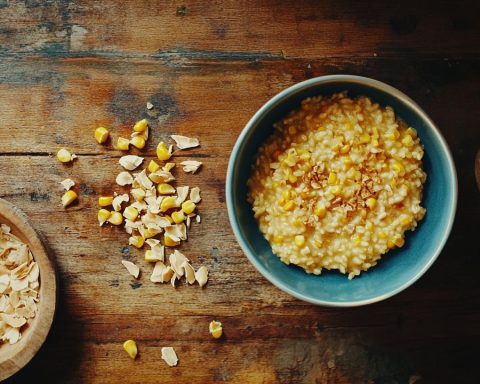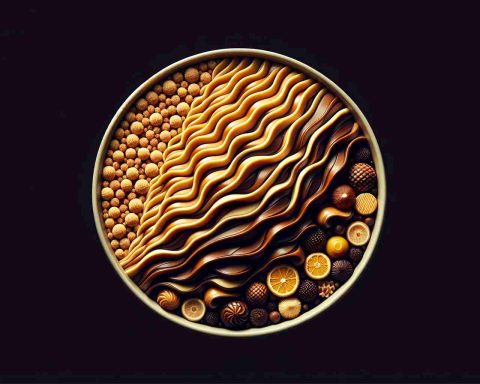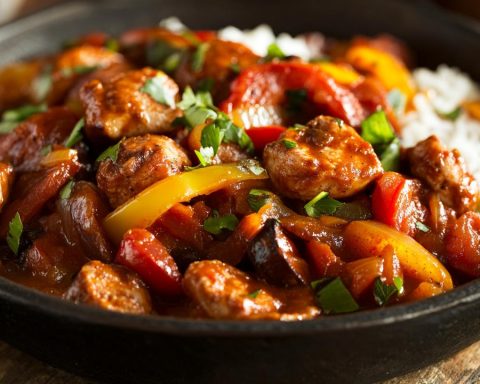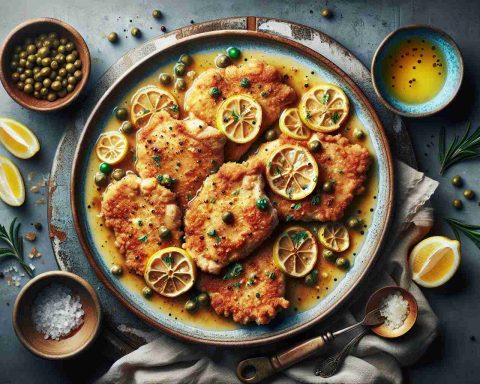In the world of gastronomy, there are few dishes that achieve the harmonious balance of rich flavors and sophistication quite like Pato a l’Orange. Originating from French cuisine, this enchanting dish offers a marriage of succulent duck and the zesty brightness of oranges, creating an unforgettable culinary experience. Legend has it that this dish graced the tables of royalty, its alluring aroma wafting through grand palaces and captivating the senses of guests with its lavish presentation and tantalizing taste.
Perfect for special occasions, Pato a l’Orange is not just a meal; it’s an experience that transforms evenings into cherished memories. Whether celebrating a milestone anniversary or hosting an intimate dinner party, this dish promises to leave a lasting impression. Its complex, rich profile pairs beautifully with a robust red wine, making it a true centerpiece of any fine dining affair.
Ingredients:
– 1 whole duck (about 5-6 lbs), cleaned and patted dry
– Salt and pepper to taste
– 2 oranges
– 1 cup freshly squeezed orange juice
– 1/4 cup Grand Marnier (or another orange liqueur)
– 1/4 cup white wine vinegar
– 1 tablespoon honey
– 1 cinnamon stick
– 2 tablespoons unsalted butter
– 1 tablespoon cornstarch
– 2 tablespoons cold water
– Fresh thyme for garnish
Instructions:
1. Preparation of the Duck:
– Preheat your oven to 375°F (190°C).
– Season the duck generously with salt and pepper, ensuring you reach all areas, including the cavity.
– Slice one orange into quarters and place inside the cavity along with the cinnamon stick.
2. Roasting the Duck:
– Place the duck on a roasting rack in a roasting pan. This will allow the fat to render and collect effectively.
– Roast in the oven for approximately 1.5 to 2 hours, or until the internal temperature reaches 165°F (75°C) in the thickest part.
– Baste the duck occasionally with the pan juices to keep the skin crispy and golden.
3. Preparing the Orange Sauce:
– While the duck is roasting, zest the second orange and set aside the zest for later.
– In a saucepan over medium heat, combine the orange juice, Grand Marnier, white wine vinegar, honey, and orange zest.
– Allow the mixture to simmer gently until it reduces by half, which should take about 15 to 20 minutes. Stir occasionally to prevent sticking.
4. Finishing the Sauce:
– In a small bowl, mix the cornstarch with the cold water until smooth.
– Gradually whisk this mixture into the reduced sauce, continuing to cook until the sauce thickens to your preference.
– Stir in the butter until melted and the sauce becomes glossy.
5. Serving the Dish:
– Once the duck is perfectly roasted, let it rest for 10-15 minutes before carving. This step is crucial to ensure the juices redistribute and keep the meat tender.
– Slice and plate the duck, drizzling generously with the warm orange sauce.
– Garnish with fresh thyme and segments from the remaining orange for a touch of brightness and color.
Cooking Tips:
– Tip for Crispy Skin: To achieve incredibly crispy skin, score the duck skin lightly with a sharp knife, being careful not to cut into the flesh. This allows more fat to render out during cooking.
– Leftover Sauce: The orange sauce can be served alongside a mixed green salad to add a citrusy zing.
Serving Suggestions:
Pair Pato a l’Orange with a rich Pinot Noir or a fruity Merlot for a decadent pairing. Accompany the duck with side dishes like garlic-infused mashed potatoes or buttery asparagus to complement the flavors and create a well-rounded meal.
Embrace the indulgence of Pato a l’Orange, and let this extraordinary dish transport you and your guests to the opulent dining rooms of France, where every bite is a celebration of culinary artistry.
Unveiling Pato a l’Orange: Secrets, Myths, and Tips for Mastery
In the realm of French cuisine, Pato a l’Orange stands as a tantalizing ode to balance and grandeur. While the dish’s origins might conjour images of lacy tablecloths at royal banquets, its true provocations lie beyond its initial allure. What cultural fables shroud this delicacy, and how can one elevate it from sumptuous treat to a culinary masterpiece?
Interesting Facts: Did you know that Pato a l’Orange is often mistaken for its Italian cousin, “Anatra all’Arancia”? Both recipes incorporate a zing of citrus, but while the French version prioritizes the zesty bite of oranges with alcohol enhancement through Grand Marnier, its Italian counterpart focuses more on the simple, rustic blend of seasoning and fruit.
Controversial Myths: Some reports suggest that this dish was not initially French but rather had its roots among traveling merchants. Culinary historians debate this, arguing over evolving spice trade influences from North Africa being the first true concoctions of orange and meat combinations, shifting the culinary origins to a broader tapestry of influences.
Frequently Asked Questions:
– How can I perfect the sauce’s texture? Pride yourself on slowly reducing the sauce to achieve a velvety consistency. Adding cornstarch incrementally ensures that you maintain control over how thick it becomes.
– Is duck a healthy choice? Nutritionally, duck is rich in iron and Vitamin B, but moderation is key due to its high-fat content.
For more culinary inspirations, visit Epicurious and Bon Appétit.
Refining Pato a l’Orange involves not just mastering its recipe but appreciating the cultural currents that enrich its backstory. Uncover hidden layers of history and myth, and allow each bite to narrate its sumptuous tale.








